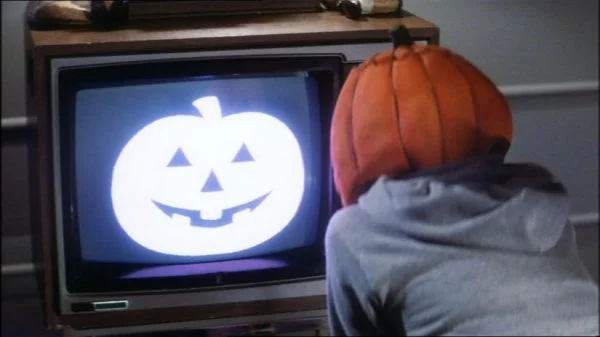Halloween Horror: Halloween III: Season of the Witch (1982)
1982’s Halloween III: Season of the Witch is a strange yet enjoyable bit of horror entertainment. It is strange not only for being the only entry in the Halloween series that isn’t a “slasher” film or about Michael Myers, but also for the way that it essentially attacks its very raison d’être: Halloween III: Season of the Witch is an attack on the commercialism of Halloween and the television driven consumerism the holiday has become in the late-twentieth and now early-twenty-first century. While the film suffers from a cheap look and some weak acting, the film’s biting social commentary, inventive gore scenes, and willingness to embrace its frankly wild scenario, make it more than worthy of checking out.
Halloween III completely departs from the story of Michael Myers and Laurie Strode, following the plans of producers John Carpenter and Debra Hill who believed that the Halloween series could branch out to become an anthology series, with each subsequent entry presenting a new Halloween-set story. Halloween III is set in the week leading up to Halloween, and follows the investigation by Dr. Dan Challis (Tom Atkins) into a mysterious murder and its relation to the goings-on of the Silver Shamrock Novelties company. Silver Shamrock, owned and operated by Irishman Conal Cochran (Dan O’Herlihy), creates novelty Halloween masks. One of the repeated elements of the film, and perhaps its most memorable cultural contribution, is the company’s advertising jingle (“Happy, happy Halloween / Halloween, Halloween. / Happy, Happy Halloween, / Silver Shamrock!”), set to the tune of “London Bridge.” The ads encourage children to buy Halloween masks (a skull, a witch, and a jack o’lantern) from Silver Shamrock and be sure to tune in to the television channel on Halloween night. It’s an irritating earworm, but effective in the way the best real-life advertising jingles are. Good luck getting it out of your head after watching the film.
The investigation of the murder leads Dr. Challis and the victim’s daughter, Ellie (Stacey Nelkin), to the town of Santa Mira (a sly reference to the 1956 Don Siegel Invasion of the Body Snatchers) where they discover a link between the murder and Silver Shamrock. Suffice to say, Cochran’s motivation in getting the kids to buy the masks is less than well-intentioned, and the answers Challis uncovers involve human-replacing androids, witchcraft, and Stonehenge. It’s all more than a little bit ludicrous, but it contains a number of interesting plot points that would later be taken up by better films including producer Carpenter’s own They Live (1988) and Edgar Wright’s The World’s End (2013). The film is bold enough to suggest that the current consumer madness surrounding Halloween (which has only intensified since 1982) is not only malicious, but that it could be used and manipulated to much more sinister purposes.
“Pod people” plots, whether in Siegel’s Body Snatchers or Carpenter’s They Live, offer a great but pliable vehicle for the critique of societal structures. Like those films, Halloween III captures the sense of madness one feels when one is placed out of step with dominant social beliefs. Unfortunately, Tom Atkins isn’t a strong enough lead to really sell the central concept the way “Rowdy” Roddy Piper was surprisingly able to in They Live. Furthermore, like Seigel’s and Carpenter’s films, Halloween III can be read ambiguously. Is it suggesting that it would be a good thing for contemporary Halloween celebrations to return to their witchcraft inspired roots? Or is the evil promoted by Silver Shamrock perfectly in line with the mind-polluting content of television commercials? It’s hard to say.
Nonetheless, Halloween III succeeds by pushing its premise all the way to the end. The gore and violence is inventive and at times shocking, without being simply gross and disturbing. And the film never backs down from its doomed trajectory, amping up the sense of dread right until the final moments of the film. In one sense, the characters are almost beside the point. The film’s real target is the viewing audience itself, eager to celebrate Halloween with a franchise built on death and commercialism.
I, for one, cannot resist this kind of self-reflexive entertainment. Halloween III is one of the more interesting horror sequels out there. If one can get past its thoroughly 1982 aesthetic and weak lead performance, there are lots of fun and thrills to be had. “Happy, happy Halloween!”
Halloween III: Season of the Witch (USA, 1982)
7 out of 10
Written and directed by Tommy Lee Wallace; starring Tom Atkins, Stacey Nelkin, Dan O’Herlihy.
